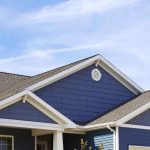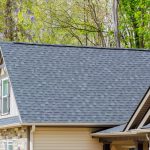You may already be aware that almost all roofs and attics are vented nowadays. Might be that you have seen a fan from the side of your attic, or perhaps you may have noticed that ridge-cap at the top of your roof. However, what you might not know is that the majority of homes do not have sufficient ventilation and that this underrated problem could be contributing damage to your home and increasing your electricity bills at the same time. That is why proper attic ventilation plays an essential role in overall roof maintenance.
What Is Attic Ventilation For?
Attic ventilation is crucial to keep the air flowing through your attic, instead of just plainly allowing it to sit. Ventilation basically aids air to pass through and out of your attic, eliminating excess moisture and heat from the air in the process. Air is then drained through the roof at your ridge-cap or by a roof vent and is taken in through regions such as your soffits and eaves. This helps produce the correct air balance that is perfect in your attic, and also plays a significant role in making your home pleasant and comfortable.
How Much Ventilation Does Your Attic Need?
Because most roofs lack sufficient ventilation, lots of individuals do not have any idea precisely how much roof ventilation they want, or what type to buy. The FHA advises that you have 1 square foot of attic space (both exhaust and intake) for every 300 square feet of attic area.
What Happens When Ventilation Is Insufficient
A scarcity of ventilation can result in a whole lot of issues in the vicinity of your home. Based upon the weather where you are currently residing, the absence of proper ventilation may have a critical effect on your electricity bills and things such as your roof’s lifespan. Below are a few examples of what might happen when there is not enough ventilation in your roofs:
-
Superheated Attics
Among the issues, a deficiency of attic ventilation may result in is a superheated attic. With no air moving through the area, the air stuck inside begins to warm up with the sun scorching its way down on the roof. This heat then starts to heat the rooms of your home as it gradually transfers itself throughout the attic’s floor. This subsequently contributes to greater energy bills as your electric fans and air conditioners do their job to fight it.
-
The Lifespan of Roof Shingles
Another problem with the fact your attic is getting super-heated is that the lifespan of your roof shingles gradually lessens. The warmth from the attic will not only be moved into your living area; eventually, it will also be moved back into the roof. This results in the shingles to become overheated, potentially frying them and diminishing their lifespan.
-
Warped Walls and Wood
The gradual transfer of heat from a super-heated attic can do a lot more damage not only to your roof but also to your electricity bills. In addition, this same heat can also warp the framing of wood in your attic, which can eventually warp the door frames and walls of your home, as well as move down the walls to damage your wallpaper and blister the paint.
Here at George Kent Home Improvements, we have experts that can help you improve your roof’s ventilation and prevent future problems by offering you a variety of helpful solutions. We have trained and dedicated professionals that are willing to provide unparalleled service depending on your ventilation needs.





